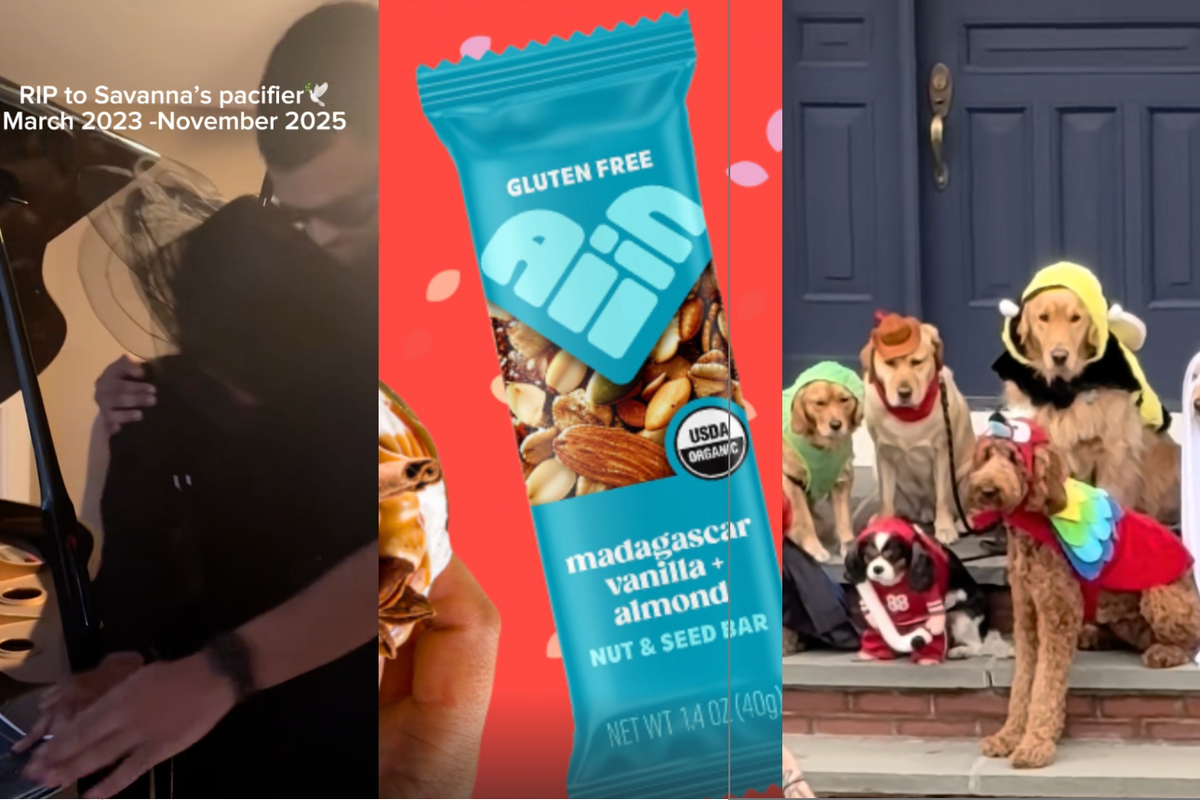4 kids, 2 parents and a (literal) world of travel: This family has no home — and they love it!
Mark Twain said, "Travel is fatal to prejudice, bigotry, and narrow-mindedness... Broad, wholesome, charitable views of men and things cannot be acquired by vegetating in one little corner of the earth all one's lifetime."
If that's true, the Kortman family has had quite the head start developing their worldviews.
Paul, 35, his wife Becky, 37, and their four kids — Alia (9), Josiah (7), Mathias (5), and Zander (3) — don't have a home. Well, at least not a stationary one.
The family of six, traveling through Thailand. All photos courtesy of Paul Kortman, used with permission. Check out their website, Home Along the Way.
In March 2014, the family of six traded in their house for life on the road. For the past 18 months, they've been traveling around the world, moving every three months or so. In the past year alone, they've lived on four continents. Currently, they're on their way to Ecuador in an RV.
What made this family give up a traditional life for one of travel and adventure?
Paul and Becky Kortman.
Well, Paul and Becky enjoyed traveling internationally as a couple before they had a family. "When we were teaching in Kazakhstan, we meet many 'third culture kids,'" Paul told me. (A third culture kid is a child who spends a fair amount of time living in a culture other than that of his or her parents.)
He and his wife were inspired to give their kids the same opportunities they witnessed in children who experienced life in different countries, including the ability "to help them avoid the consumerism and American-centric worldview they would have growing up in the states."
Additionally, Paul likes a challenge. "I was inspired by the location independent entrepreneur movement that I'm connected to," Paul said. "[But] none of these are family oriented; they're all 20-somethings who have no commitments. We wanted to prove that it could be done as a family."
Traveling abroad is beneficial to children and adults in many ways.
A recent Atlantic article examined new research on the link between greater creativity and travel. Columbia Business School professor Adam Galinsky has conducted many studies about the benefits of travel. "Foreign experiences increase both cognitive flexibility and depth and integrativeness of thought, the ability to make deep connections between disparate forms," he said. "The key critical process is multicultural engagement, immersion, and adaptation."
The Kortman kids and Paul in South Africa.
It's not just a person's creativity that will get a boost from travel, though. Their sense of trust in others benefits as well. "We found that when people had experiences traveling to other countries it increased what's called generalized trust, or their general faith in humanity," Galinsky said. "When we engage in other cultures, we start to have experience with different people and recognize that most people treat you in similar ways. That produces an increase in trust."
There's more! The Atlantic article quoted Mary Helen Immordino-Yang, Associate Professor of Education and Psychology at the University of Southern California, on the benefits that traveling abroad can have for a person's sense of self.
"What a lot of psychological research has shown now is that the ability to engage with people from different backgrounds than yourself, and the ability to get out of your own social comfort zone, is helping you to build a strong and acculturated sense of your own self," she said. "Our ability to differentiate our own beliefs and values … is tied up in the richness of the cultural experiences that we have had."
According to all of this research, the Kortman children's lifestyle should go a long way in helping them grow up as open-minded, confident, and creative individuals.
"It's most beneficial to our kids through firsthand experiences," Paul said. “They'll be watching a video on YouTube and comment, 'Hey we were there!' or 'That's not what the Philippines really looks like.'" He explained that the family experiences life beyond videos and books — "our kids know stuff because they were there."
The Kortman kids in Indonesia.
Additionally, “They have a broader view of differences," Paul continued.
And when it comes to consumerism, a life full of travel is a great way to avoid it. The Kortmans have no trouble saying "no" to unnecessary purchases. Plus? It's a much less expensive way to live, Paul said.
While being away from friends isn't always easy, and the kids miss out on some extracurricular activities like music, dance, and sports, the freedom and flexibility that the Kortmans enjoy make the trade-off worth it.
Parents raise kids in many nontraditional ways, and the Kortmans have embraced a lifestyle that exposes their kids to many different cultures.
To ensure their educational needs are met, Becky acts as their teacher, mixing principles of homeschooling, road schooling, and unschooling.
The Kortmans in Singapore.
Given that their lifestyle isn't exactly "the norm," the Kortmans are met with mixed responses. "Some people think were crazy and irresponsible…" Paul said, "… and some are inspired. Often we receive incredulous responses from people when we explain our lifestyle."
But the people who matter the most — Alia, Josiah, Mathias, and Zander — love their way of life. “When we came back to the U.S., the three oldest made us promise that we wouldn't stop traveling," Paul said.
“They were concerned we would stop this lifestyle. When we bought an RV to live in full time, the kids wanted nothing more than to move into her… They're very attached to the RV because it gives us the ability to take more stuff with us but still live the nomadic lifestyle."
The Kortmans are able to live the way they do because Paul runs a digital marketing business, which sustains their family and three full-time employees. After their first six months of traveling, they realized there wasn't a formal online place for nomad families to gather and receive support, so Paul and Becky co-founded NomadTogether, which offers support through education, tools, and a community forum.
While taking that initial leap of faith wasn't easy — "I do have to admit when it came time to purchase the first plane tickets for the six of us, I got really nervous and procrastinated a bunch," Paul told me — the Kortmans haven't regretted their choice for a minute.
I asked Paul what he wanted others to know about their lives, and he said, "You can do it too! It's less expensive, and we're leaving a smaller carbon footprint. Consumerism is addicting, and the way we found to not succumb to it was to change [our] lifestyle."
As for the future, the Kortmans aren't certain what it holds, but they have a loose plan.
They're currently looking for a "homebase" where they can spend about six months at a time. "At this point, we're headed to Mexico and Ecuador to see if either one of those would be fitting for us."
Their kids will still experience life immersed in another culture and get to travel, and they can have horses and dogs, something they'd really like right now — the best of all worlds!
"This lifestyle aids in contentedness and slows down the pace of life," Paul said.





 Team meeting chaos: one employee silently pleads for help.
Team meeting chaos: one employee silently pleads for help. Overcoming fears: Shadow looms large, but courage stands firm.
Overcoming fears: Shadow looms large, but courage stands firm. Confused expression against a bright yellow background.
Confused expression against a bright yellow background.
 Stayin Alive GIF by Bee Gees
Stayin Alive GIF by Bee Gees 
 BabyCenter's Top 10 baby names for 2025.Canva
BabyCenter's Top 10 baby names for 2025.Canva The name Luca has seen a rise in popularity.
The name Luca has seen a rise in popularity.  Susannah has climbed over 3,000 spots on the baby name chart.
Susannah has climbed over 3,000 spots on the baby name chart.  Pope Francis passed away in April 2025.
Pope Francis passed away in April 2025.  How do you choose a name for a brand new human?
How do you choose a name for a brand new human? 
 Never good when the HOA President comes knocking.
Never good when the HOA President comes knocking.  Kids should be able to play outside; but how strictly should we regulate them? Photo by
Kids should be able to play outside; but how strictly should we regulate them? Photo by